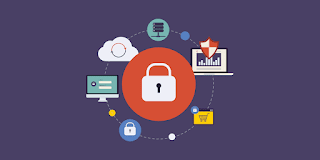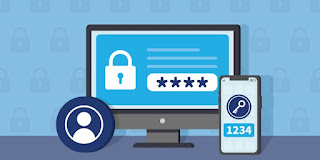Essential Measures to Increase Website Security
In an increasingly interconnected world, ensuring robust website security is of paramount importance. Cyber threats continue to evolve, making it imperative for website owners to adopt comprehensive strategies to protect sensitive data and maintain user trust. This article outlines fourteen essential practices that can significantly enhance website security.
Tips to Increase Website Security
The following tips will help you to improve your website security.
1. Regular Software Updates
Regular software updates are the foundation of a secure
website. Outdated software, including your content management system (CMS) and
plugins, often contains vulnerabilities that hackers can exploit. These
vulnerabilities might allow attackers to gain unauthorized access to your
website or compromise user data. By staying current with updates, you patch
these vulnerabilities and close potential entry points for cyberattacks.
Regular updates also ensure that your website benefits from the latest security
enhancements provided by software developers.
2. Strong Password Policies
Implementing strong password policies is a crucial defense
mechanism. Encourage users to create complex passwords that combine uppercase
and lowercase letters, numbers, and symbols. Weak passwords make it easier for
attackers to gain unauthorized access to user accounts and sensitive data.
Enforcing password changes at regular intervals further reduces the risk of
unauthorized access by rendering compromised passwords obsolete. Furthermore,
implementing multi-factor authentication (MFA) adds an extra layer of security
by requiring an additional form of verification, such as a code sent to the
user's mobile device.
3. Web Application Firewalls (WAFs)
Web Application Firewalls (WAFs) act as gatekeepers against
online threats. These firewalls filter incoming traffic and identify and block
malicious activities. By examining patterns and behaviors, a WAF differentiates
between legitimate users and potential attackers. It provides an additional
layer of security by thwarting common attacks like SQL injection and cross-site
scripting (XSS). For instance, if an attacker attempts to inject malicious code
into a web form, the WAF detects the suspicious behavior and prevents the code
from executing, protecting your website and users.
4. Data Encryption
Implementing data encryption safeguards sensitive
information during transmission. Secure Sockets Layer (SSL) and Transport Layer
Security (TLS) protocols establish encrypted connections between users'
browsers and your web server. This encryption prevents eavesdropping and data
interception by converting information into unreadable code, rendering it
useless to unauthorized parties. For example, when a user enters their credit
card information on your website, encryption ensures that even if an attacker
intercepts the data, they won't be able to decipher it without the encryption
key.
5. Regular Backups
Regular backups are your safety net in the face of security
breaches or data loss. Back up your website's content, databases, and
configurations frequently to ensure you can restore your site quickly if
needed. Store backups on secure off-site servers to prevent loss due to
physical server damage. Additionally, regularly testing your restoration
process is crucial to ensure its reliability. In the event of a cyberattack or
accidental data deletion, having recent backups enables you to restore your
website to a state before the incident occurred.
6. Vulnerability Testing
Vulnerability testing involves identifying weaknesses before
cybercriminals can exploit them. Regular assessments and penetration testing
scan your website's code, third-party integrations, and configurations for
vulnerabilities. Automated tools and manual tests help uncover hidden
vulnerabilities, allowing you to address them before they are leveraged for
attacks. By proactively identifying and fixing vulnerabilities, you reduce the
likelihood of attackers finding and exploiting these weaknesses to compromise
your website's security.
7. User Permissions and Access Control
Implementing user permissions and access control ensures
that only authorized individuals have specific privileges. By assigning access
based on roles and responsibilities, you limit potential damage caused by
compromised accounts. Stricter access controls prevent unauthorized users from
accessing sensitive functions, mitigating the risk of data breaches. For
example, administrative tasks should be restricted to users with specific
administrative roles, reducing the likelihood of accidental or intentional misuse
of critical functions.
8. Security Training and Awareness
Security training and awareness are essential for fostering
a culture of cybersecurity. Regularly educate your team about phishing
attempts, social engineering tactics, and safe online practices. A
well-informed team can recognize and respond to potential threats, minimizing
the likelihood of successful attacks targeting human vulnerabilities.
Cybersecurity training can empower employees to spot suspicious emails, avoid
clicking on malicious links, and report potential security incidents promptly.
9. Content Security Policies (CSPs)
Content Security Policies (CSPs) are rules that dictate
which sources of content are considered safe to load on a webpage. By
implementing CSPs, you prevent cross-site scripting (XSS) attacks by
controlling the origins of scripts and resources that can be executed on your
site. This prevents malicious code injection and enhances overall security.
CSPs specify which domains are allowed to serve scripts, styles, and other
resources on your website, reducing the risk of attackers injecting harmful
scripts that manipulate user interactions or steal sensitive data.
10. Incident Response Plan
An incident response plan outlines how your organization
will respond to security breaches. It includes communication protocols,
technical mitigation strategies, and steps for notifying affected parties. A
well-prepared plan enables you to respond swiftly and effectively to minimize
the impact of a breach on your website and user data. By having predefined
steps and roles in place, you can contain the breach, mitigate its effects, and
communicate transparently with affected users to maintain their trust in your
organization's commitment to security.
11. Choose a Secure Web Hosting Provider
Selecting a secure web hosting provider is a critical
decision that directly impacts your website's security. Opt for a hosting
provider that offers robust security features, regular updates, and monitoring
services. A reliable host implements firewalls, intrusion detection systems,
and other security measures to create a secure environment for your website to
thrive.
12. Implement Security Headers
Security headers are HTTP response headers that provide
instructions to web browsers about how to behave when interacting with your
website. Headers like Content Security Policy (CSP), X-Frame-Options, and
X-XSS-Protection can prevent various types of attacks, such as cross-site
scripting (XSS) and clickjacking. By correctly configuring security headers, you
add an extra layer of protection against common vulnerabilities.
13. Monitor and Log Activities
Implement continuous monitoring and logging of your
website's activities. Utilize intrusion detection systems (IDS) and security
information and event management (SIEM) tools to detect unusual patterns and
potential security breaches. Detailed logs help in identifying the source of
attacks and understanding the methods used by attackers, enabling you to
strengthen your defenses based on real-world data.
14. Conduct Regular Security Audits
Periodic security audits provide a comprehensive evaluation
of your website's security posture. Engage external security experts to assess
your website's vulnerabilities, configurations, and adherence to security best
practices. A security audit helps identify potential weaknesses that might not
be detected through regular internal assessments, ensuring a thorough
assessment of your website's security.
Summary of the Ways to Increase Website Security
Enhancing website security demands a comprehensive and
proactive approach. By implementing these fourteen essential measures, along
with selecting a secure web hosting provider, you create multiple layers of
defense against evolving cyber threats. This concerted effort not only
safeguards your data but also cultivates trust among users, ensuring a safe and
seamless online experience.
Related Links:
https://www.searchenginejournal.com/website-security-seo/337439/
https://www.pixelsolvent.com/how-to-choose-the-best-web-hosting-services-for-your-website/
https://moz.com/blog/how-to-make-your-website-more-secure
https://www.webdesigncochin.in/
https://www.semrush.com/blog/https-a-modern-false-sense-of-security/
https://wordpress.com/go/website-building/website-maintenance/







Comments
Post a Comment